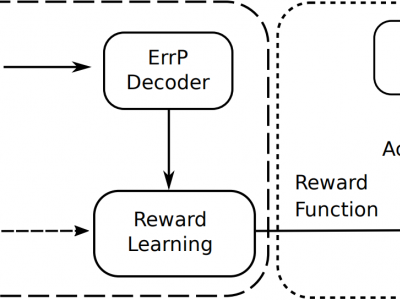Machine Learning

Study on Sleep Positions using a Wearable Device
This device constantly collects data about acceleration in three directions (tri-axial) 50 times a second (50 Hz). It has several components: a microcontroller for gathering and sending data (ESP8266), a battery (lithium-ion), a sensor for measuring acceleration (ADLX345 accelerometer), and a protective case made of plastic. The device can also store data temporarily on a microSD card in case the wireless connection is lost.
- Categories:
 176 Views
176 ViewsThis dataset consists of inertial, force, color, and LiDAR data collected from a novel sensor system. The system comprises three Inertial Measurement Units (IMUs) positioned on the waist and atop each foot, a color sensor on each outer foot, a LiDAR on the back of each shank, and a custom Force-Sensing Resistor (FSR) insole featuring 13 FSRs in each shoe. 20 participants wore this sensor system whilst performing 38 combinations of 11 activities on 9 different terrains, totaling over 7.8 hours of data.
- Categories:
 218 Views
218 Views
We use a total of 16 datasets, detailed descriptions of which are provided in Table II. Among them, 11 datasets are from the UCI database, the DLBCL-Harvard dataset is from the ELVIRA biomedical database, Yale and ORL
- Categories:
 84 Views
84 Views
The training trajectory datasets are collected from real users when exploring the volume dataset on our interactive 3D visualization framework. The format of the training dataset collected is trajectories of POVs in the Cartesian space. Multiple volume datasets with distinct spatial features and transfer functions are used to collect comprehensive training datasets of trajectories. The initial point is randomly selected for each user. Collected training trajectories are cleaned by removing POV outliers due to users' misoperations to improve uniformity.
- Categories:
 90 Views
90 Views
<p>This dataset contains symptoms and disease information. It contains total of 1325 symptoms covered with 391 disease.This dataset is refernced from website MedLinePlus. This dataset have training and testing dataset and can be used to train disease prediction algorithm . It is created on own for project disease prediction and do not involves any funding or promotional terms.</p>
- Categories:
 2968 Views
2968 Views
Subjects are categorized into three groups based on office blood pressure threshold: Normal (N), Prehypertension (P), and Stage 1 Hypertension (S). Each group contains 100 subjects, and all records have duration of at least 8 minutes. This study uses sliding window with length of 1 second and step size of 1 second to segment records. PPG, ECG and BP yield 167432 segments, respectively. MAP, DBP, and SBP are defined as average, minimum, and maximum of each BP segment, respectively. Max-Min normalization is applied to PPG and ECG segments.
- Categories:
 362 Views
362 Views
This dataset comprises three benchmarks: Digits-5, PACS, anf office_caltech_10. Digits-5 is a set of handwritten digit images sampled from five domains: MNIST, MNIST-M, USPS, SynthDigits, and SVHN. All sample are images of numbers ranging from 0 to 9. PACS is composed of four different datasets, each representing a different visual domain: Photo, Art Painting, Cartoon, and Sketch. It contains 9,944 images, including 1,792 real photos, 2,048 art paintings, 2,344 cartoon images, and 2,760 sketches.
- Categories:
 108 Views
108 ViewsNumerous studies have focused on exploring Android malware in recent years, covering areas such as malware detection and application analysis. As a result, there is a pressing need for a reliable and scalable malware dataset to support the development and evaluation of effective malware studies. Although several benchmarks for Android malware datasets are widely used in research, they have significant limitations. Firstly, many of these datasets are outdated and do not capture current malware trends. Additionally, some have become obsolete or inaccessible, limiting their usefulness.
- Categories:
 289 Views
289 Views


